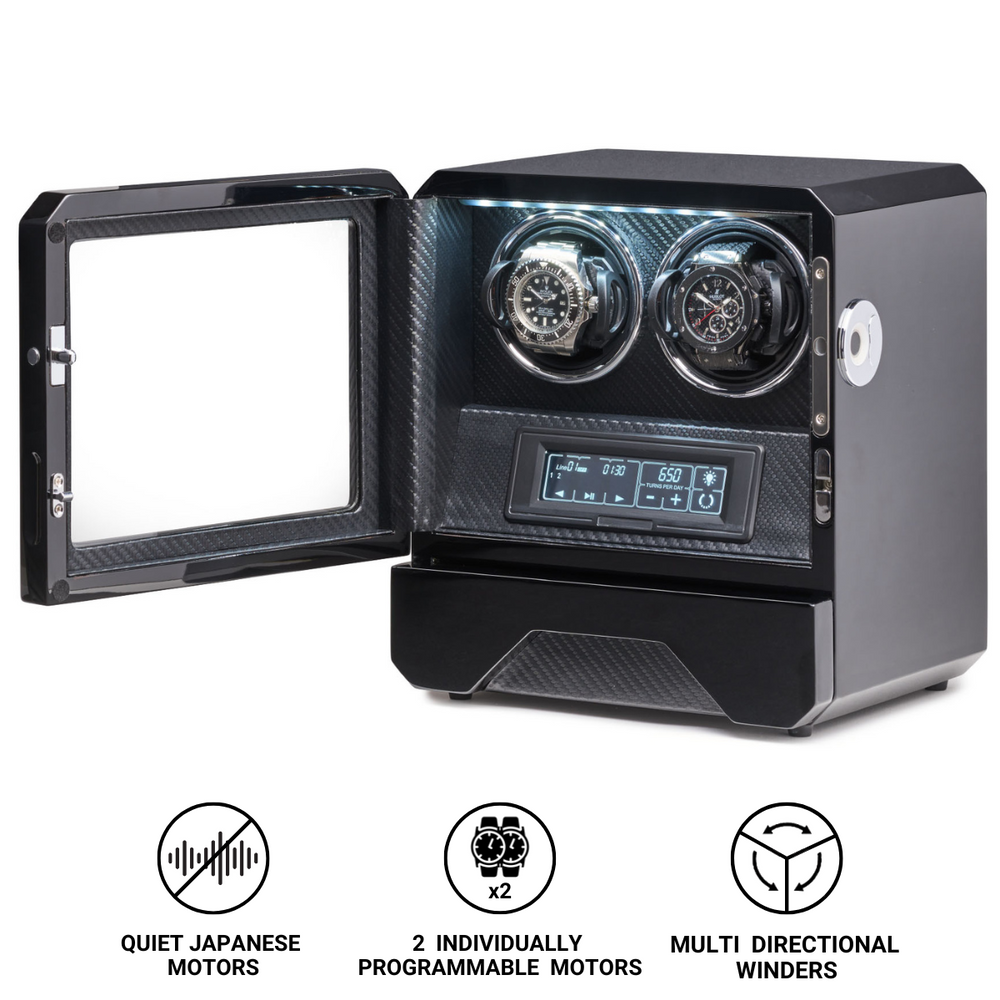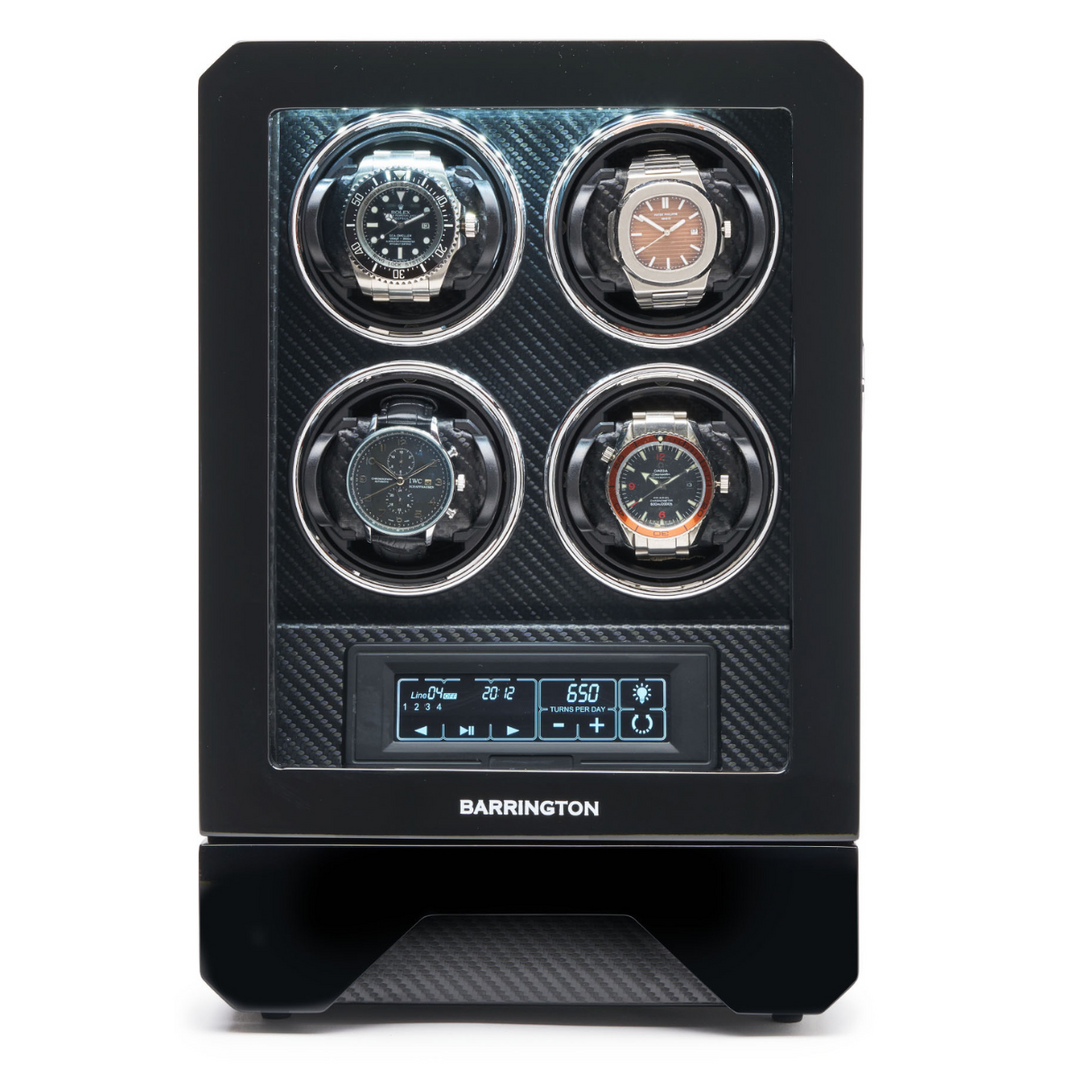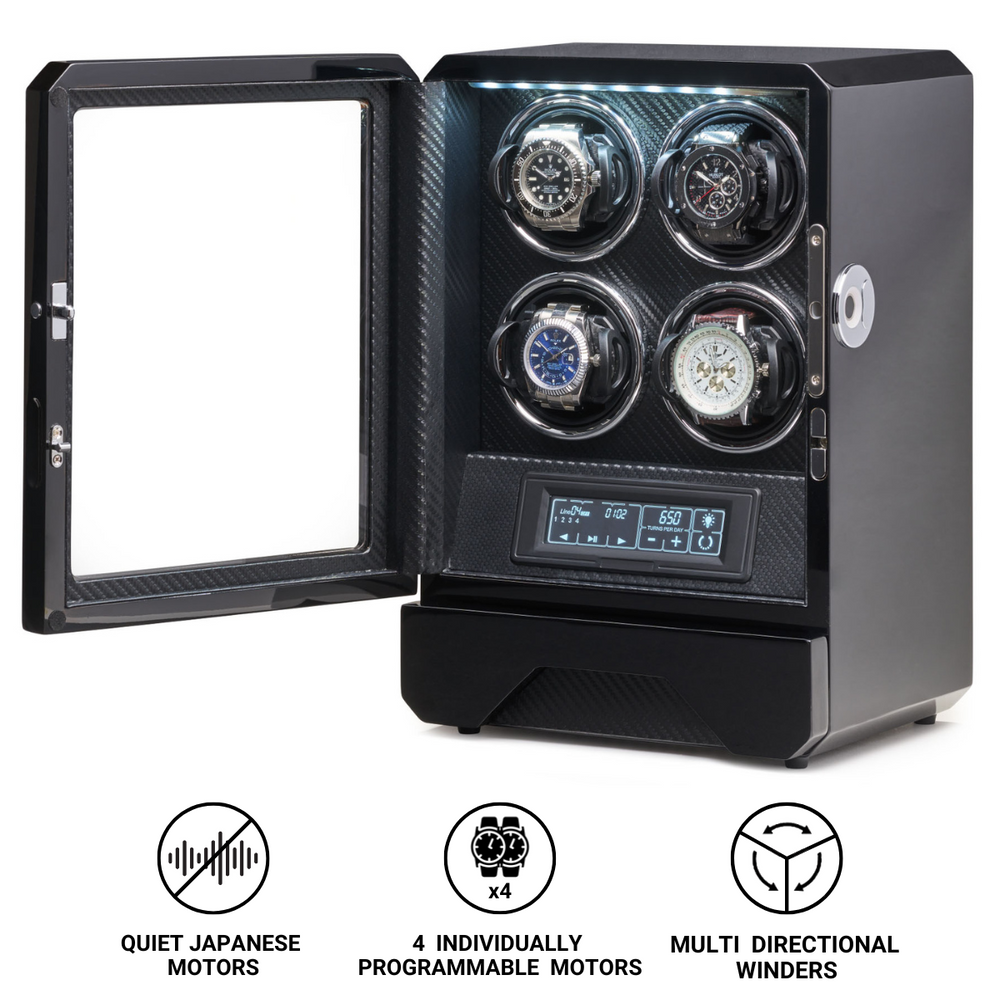Demystifying TPD: Why 650 Turns Per Day is the Automatic Watch's Magic Number
To the uninitiated, a high-quality watch winder appears as a simple, elegant display box. Yet, the moment you interact with its settings, you're faced with a confusing array of options: TPD (Turns Per Day) values like 650, 900, 1200, and directional acronyms such as CW (Clockwise) or CCW (Counter-Clockwise).

Setting these controls incorrectly is the single most common mistake automatic watch owners make. While 650 TPD is widely cited as the universal safe standard, understanding why this number works, and, critically, when to ignore it, is key to maintaining your movement's health and preventing unnecessary internal wear.
The "Magic" of 650 TPD: The Universal Safe Zone
The number 650 is not an arbitrary figure; it represents the "Goldilocks" zone for the vast majority of modern, mass-market automatic movements. This includes calibers from Rolex, Omega, and the ubiquitous ETA/Sellita families (which power everything from Tissot to Tudor).
The Efficiency Factor
Modern automatic movements are engineered for efficiency. They employ bi-directional rotors that wind the mainspring regardless of which direction they spin.
-
Optimal Energy: These highly efficient rotors typically require only 600 to 650 full rotations over a 24-hour period to generate sufficient energy; this keeps the mainspring charged for the entire day.
-
The Safety Net: Setting a winder to 650 TPD ensures the watch stays running while also minimizing the time the movement spends in a "fully wound" state.
Avoiding Excessive Wear
While you cannot "break" an automatic watch by overwinding it, thanks to the internal slipping bridle (a clutch mechanism that disengages the spring when full), winding beyond capacity is detrimental.
The continuous, forceful spinning beyond the point of being full causes the bridle to slip repeatedly. This action creates unnecessary friction and wear inside the mainspring barrel over months or years, accelerating the need for servicing.
Key Takeaway: If you are unsure, 650 TPD Bi-Directional is the safest, most efficient default. This setting covers approximately 90% of the market, including watches like the Rolex Submariner (Calibers 3135/3235) and Omega Master Co-Axials. If you want to be certain, you can use our Turns Per Day Database

The Exceptions: When 650 Fails to Keep Time
Relying solely on the 650 TPD default can result in a stopped watch if you own specific, non-standard, or highly complex movements. This is where researching your specific watch caliber pays dividends.
The Uni-Directional Standard: Valjoux 7750 Chronographs
The Valjoux 7750 is one of the most famous and widely used automatic chronograph movements, found in iconic pieces from brands like Breitling, IWC, Panerai, and TAG Heuer.
-
The Issue: Unlike the bi-directional rotors of Rolex or ETA, the 7750 is Uni-Directional; it only winds the mainspring when spinning Clockwise (CW).
-
The Result: If you set a 7750-based watch to the standard 650 TPD Bi-Directional setting, the watch is effectively only receiving 325 turns of actual winding (since the counter-clockwise turns do nothing). The watch will eventually run out of power and stop.
-
The Fix: These movements typically require 800 TPD set strictly to Clockwise (CW).
The Micro-Rotor: High Horology and Thin Calibers
Certain movements in high horology, such as Patek Philippe's ultra-thin Caliber 240, use a small, embedded "micro-rotor" instead of a full-sized rotor.
-
The Issue: A smaller, lighter micro-rotor has less mass and leverage; consequently, it winds less efficiently per turn than a standard heavy rotor.
-
The Fix: These high-efficiency, low-inertia movements often require a higher setting, typically 800+ TPD, and like the Valjoux, many are Uni-Directional (often Counter-Clockwise only).
Directionality: The Hidden Winding Variable
The TPD value is rendered useless if the Direction setting is incorrect. This is the primary reason users mistakenly conclude their winder "doesn't work."
|
Movement Type |
Typical Direction |
Typical TPD |
Examples (Calibers) |
|
Standard Automatic |
Bi-Directional (CW/CCW) |
650 |
Rolex 3135, ETA 2824, Omega 8500 |
|
The "Chronograph" Standard |
Clockwise (CW) |
800 |
Valjoux 7750, most Breitling/Panerai |
|
High Horology / Thin |
Counter-Clockwise (CCW) |
800+ |
Patek Cal. 240, some JLC movements |
The "Rest Cycle" and Intermittent Winding Myth
A common misconception is that a winder should rotate continuously, but this is counter-productive; a winder should never run non-stop.
A properly programmed winding cycle runs intermittently. For a 650 TPD setting, a good winder may turn for 1 minute, then "sleep" or rest for 10–15 minutes before the next cycle.
-
Mimicking Natural Wear: This intermittent operation closely mimics natural wrist movement, which is sporadic; no one moves their wrist non-stop for 24 hours.5
-
Protecting Precision: Continuous operation generates unnecessary motor heat and can create constant magnetic fields (if the motor is unshielded), both of which are enemies of horological precision.
To Conclude
In summary, while 650 TPD (Turns Per Day) remains the indispensable universal standard, ensuring both movement health and efficient winding, a significant minority of popular watches, particularly uni-directional chronographs and micro-rotor movements, require specialized TPD and directional settings; failure to use the correct combination causes unnecessary friction or leaves the watch stopped.
To eliminate guesswork and achieve precision winding, enthusiasts should make use of our Turns Per Day Database.













